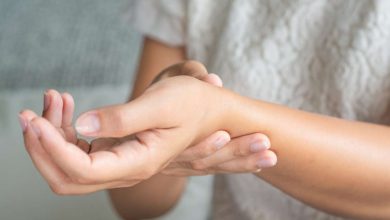rheumatoid arthritis
What Are 10 Ways To Fight Chronic Rheumatoid Arthritis Pain?
From fatigue to lack of desire to do things, rheumatoid arthritis (RA) can affect your life in many of ways. The most debilitating symptom for many people is pain. Because this pain comes in various forms, you might need more than one strategy to help you relieve it.
The first objective of pain relief is controlling inflammation. Inflammation can cause severe (short-term) pain or long-term smoldering pain.
Getting your RA pain under control can take some work. It can take several drugs — some to impede the joint damage and a few to relieve joint pain. Alternative therapies, like acupuncture, combined with drugs can also help relieve pain. Try These strategies to help relieve rheumatoid arthritis pain — with your doctor’s supervision of course.
1 – DMARDS
The number 1 choice is to control inflammation with disease-modifying anti-rheumatic drugs, known as DMARDs. These drugs, which function to curb the body’s overactive immune system reaction, are also utilized to prevent joint damage and slow the progression of the disease. DMARDs are often prescribed following a diagnosis to be able to prevent as much joint damage as possible.
2 – Pain Medication
The top drugs for acute pain, are nonsteroidal anti-inflammatory drugs, known as NSAIDs. Aspirin belongs to this class of drugs, as does a brand new type of NSAID known as celecoxib. While NSAIDs treat joint pain, studies have proven they don’t prevent joint damage. Also, NSAIDs can irritate the stomach lining and cause kidney damage when used over an extended period of time.
3 – Diet
Some diets are believed to treat RA symptoms; however, they are not endorsed by the medical community. There is no concrete evidence that there is a diet that will decrease RA pain. However, there is some evidence that omega-3 fatty acids can decrease inflammation. This will help joint pain that stems from inflammation.
4 – Weight Loss
For people who are overweight, weight loss can help lower the need for the use of drugs in people with rheumatoid arthritis. In one study 93% of participants, were using DMARDs before they underwent bariatric surgery. After the surgery there was a decrease to 59%.
5 – Massage
A massage by a therapist (or even one you give yourself) can be a soothing therapy to help decrease muscle and joint pain. A study published in May 2013 from the journal Complementary Therapies in Clinical Practice involved 42 individuals with RA in their arms. They received either light massage or moderate massage from a massage therapist once a week for a month. The participants were also taught to perform self-massage at home. After a month of therapy, the moderate-pressure massage group had less pain and increased range of motion than others.
6 – Exercise
Although you may not feel like getting up and exercising when you have RA, and it may seem that exercising will put strain on your body, gentle exercises can decrease muscle and joint pain. Exercises that are Non-impact or low-impact exercise can decrease pain. One of the best exercises you can do for RA is water aerobics in a hot pool because the water buoys your own body. Yoga is also another great choice to decrease RA pain. When it comes to exercise, however, it’s also sensible to be cautious. Talk to your doctor if any workouts make your pain worse. Also, it is advised to put exercise on hold during an acute flare.
7. Orthoses
This is mechanical assistance which can help support and protect your joints. You can even find special gloves for your hand and finger. A physical therapist can help you decide the best orthoses choices for you.
8 – Warm Bath
Relaxing in a hot bath can also bring relief, as can exercising in a hot pool.
9 – Acupuncture
This Eastern medicine practice, that has been in existence for centuries, is believed to function by stimulating the body’s natural painkillers through the use of fine needles gently positioned near nerve endings.
10 – Electrical Stimulations (TENS)
TENS is a small device that sends electrical signals into your body. This is done with the help of electrodes that are placed on the skin close to the affected area.
Keep in mind, you’re not alone in your fight against rheumatoid arthritis pain — your physician can help you find relief. If you are experiencing more pain than before, or if pain is interfering with your ability to get things done, do not be afraid to speak to your physician. Consult with your rheumatologist about pain relief options, such as exercise, massage, yoga, and acupuncture, but keep in mind that the first priority on your pain relief checklist must be to keep RA inflammation in check.

